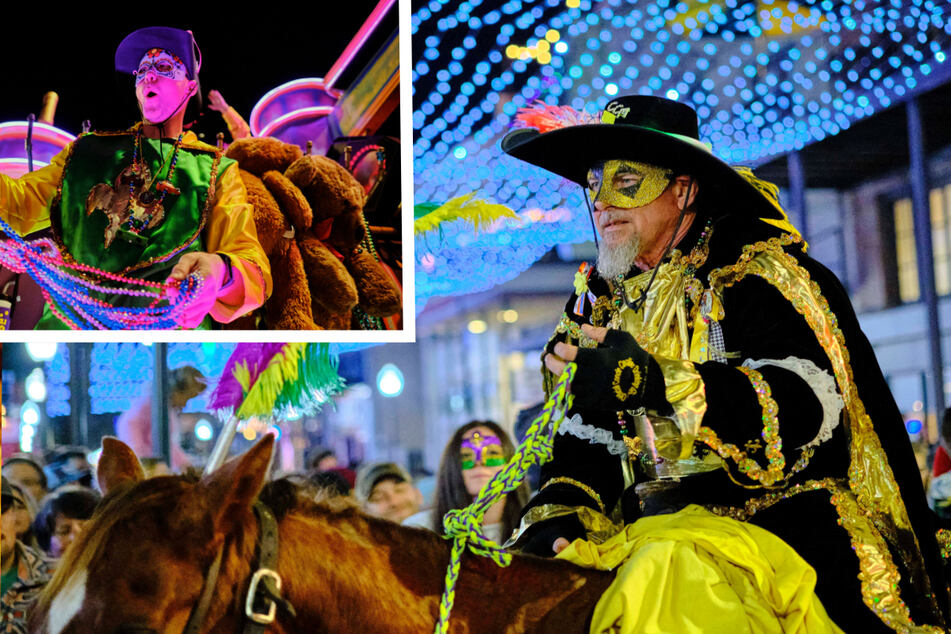Happy Mardi Gras! Everything to know about "Fat Tuesday"
New Orleans, Louisiana - Happy Mardi Gras! With beads, booze, masks, parades, dancing, candy, and glitter: Mardi Gras has begun in the Big Easy and revelers are ready as ever.

Fat Tuesday – or Mardi Gras, in French – officially falls this year on March 4. It's celebrated all over the globe, but it’s only a legal holiday in Louisiana, and has been since 1875.
The celebration in New Orleans is legendary and doesn't just last one day. It's a multi-week event full of parades, music, masquerade balls, and glitter, and draws at least 1.5 million visitors to New Orleans in February annually.
The festivities have been back in person after the coronavirus pandemic since 2022, and have been growing since.
But what is Mardi Gras anyway? We dove in to figure out how this wacky holiday came to be in the first place.
What is Mardi Gras? A history of revelry

For people around the world, Fat Tuesday it is an excuse to party. It's the last day of a merry, wild carnival season and is all about imbibing fatty foods, booze, and sweets like the typical holiday king cake.
Traditionally, Fat Tuesday is a last day of indulgence for many Christians, as it marks the day before the period of Lent. Those who observe the 40 day-long stint from Ash Wednesday until Easter tend to cut meat and other decedent foods out of their diets. After the more somber period of Lent, many break fast with a chocolate bunny or a basket full of candy on Easter Sunday.
The roots of Mardi Gras have actually been celebrated for thousands of years, and may have initially been Christianity's way of marking pagan fertility rites. French explorers first brought the traditions to US soil, which is why the biggest celebrations still occur in US cities with ties to France, like St. Louis, Missouri and – of course – New Orleans.
Mobile, Alabama boasts that it was the first place to make Mardi Gras official in the US. However, their biggest happening of their carnival season isn’t on Fat Tuesday, it's celebrated the Sunday before.
In Mobile, the merry-making is called Joe Cain Day, after the event's founder, who dressed up and reveled in the streets in the 1860s after the Civil War. These days, the city celebrates with its own smaller parade and traditions and they munch on MoonPies – a chocolate-dipped marshmallow and graham cracker sandwich – instead of king cake. Spectators try to catch a signed black median thrown by the veiled and black clad performers of Cain’s Merry Widows, a troupe that theatrically bemoans the loss of Joe Cain to kick off the events with Joe Cain Day, which claims it revives an "authentic" Mardi Gras.
But the most famed pilgrimage for those celebrating continues to be Mardi Gras in New Orleans, where social groups called "krewes" organize most of the carnival season's festivities. They spend hundreds of hours and dollars putting together costumes, while many bring attention to social justice causes and preserving the history of local traditions and its mix of African-American, Caribbean, French, and Spanish-influenced culture.
The krewes are much like the secret organizations that kicked-off the New Orleans parades in 1704, according to the official website of Mardi Gras New Orleans, who first organized a procession with a huge bull's head pushed on wheels by 16 men. The events later grew into elegant society masquerade balls, all of which have informed the purple, green, and gold tinged celebrations of today.
The history of the holiday has evolved throughout the centuries, as bead-tossing and cake eating now mark a very merry and modern-day Fat Tuesday indeed.
Cover photo: IMAGO/ZUMA Wire

